Amazon MWS Connector for SSRSAmazon MWS (Marketplace Web Service) Connector can be used to integrated web service API that helps Amazon sellers to programmatically exchange data on listings, orders, payments, reports, and more. In this article you will learn how to quickly and efficiently integrate Amazon MWS data in SSRS without coding. We will use high-performance Amazon MWS Connector to easily connect to Amazon MWS and then access the data inside SSRS. Let's follow the steps below to see how we can accomplish that! Amazon's MWS (Marketplace Web Service) is being deprecated and replaced by the newer AWS Selling Partner API (SP-API). For a more robust and secure integration, we recommend using our AWS Selling Partner (SP-API) Connector. As Amazon is phasing out MWS functionality and eventually plans to fully deprecate it.
Amazon MWS Connector for SSRS is based on ZappySys API Driver which is part of ODBC PowerPack. It is a collection of high-performance ODBC drivers that enable you to integrate data in SQL Server, SSIS, a programming language, or any other ODBC-compatible application. ODBC PowerPack supports various file formats, sources and destinations, including REST/SOAP API, SFTP/FTP, storage services, and plain files, to mention a few. |
Connect to Amazon MWS in other apps
|
Video Tutorial - Integrate Amazon MWS data in SSRS
This video covers the following topics and more, so please watch carefully. After watching the video, follow the steps outlined in this article:
- How to download and install the required PowerPack for
Amazon MWS integration in SSRS - How to configure the connection for
Amazon MWS - Features of the
ZappySys API Driver (Authentication / Query Language / Examples / Driver UI) - How to use the
Amazon MWS in SSRS
Create Data Source in ZappySys Data Gateway based on API Driver
-
Download and install ODBC PowerPack.
-
Search for gateway in start menu and Open ZappySys Data Gateway:

-
Go to Users Tab to add our first Gateway user. Click Add; we will give it a name tdsuser and enter password you like to give. Check Admin option and click OK to save. We will use these details later when we create linked server:

-
Now we are ready to add a data source. Click Add, give data source a name (Copy this name somewhere, we will need it later) and then select Native - ZappySys API Driver. Finally, click OK. And it will create the Data Set for it and open the ZS driver UI.
AmazonmwsDSN

-
When the Configuration window appears give your data source a name if you haven't done that already, then select "Amazon MWS" from the list of Popular Connectors. If "Amazon MWS" is not present in the list, then click "Search Online" and download it. Then set the path to the location where you downloaded it. Finally, click Continue >> to proceed with configuring the DSN:
AmazonmwsDSNAmazon MWS
-
Now it's time to configure the Connection Manager. Select Authentication Type, e.g. Token Authentication. Then select API Base URL (in most cases, the default one is the right one). More info is available in the Authentication section.
Please refer to below API reference (external site) link for OAuth [OAuth]Fill in all required parameters and set optional parameters if needed:
AmazonmwsDSNAmazon MWSOAuth [OAuth]https://mws.amazonservices.comRequired Parameters AWSAccessKeyId Fill-in the parameter... Secret Key Fill-in the parameter... SellerId Fill-in the parameter... 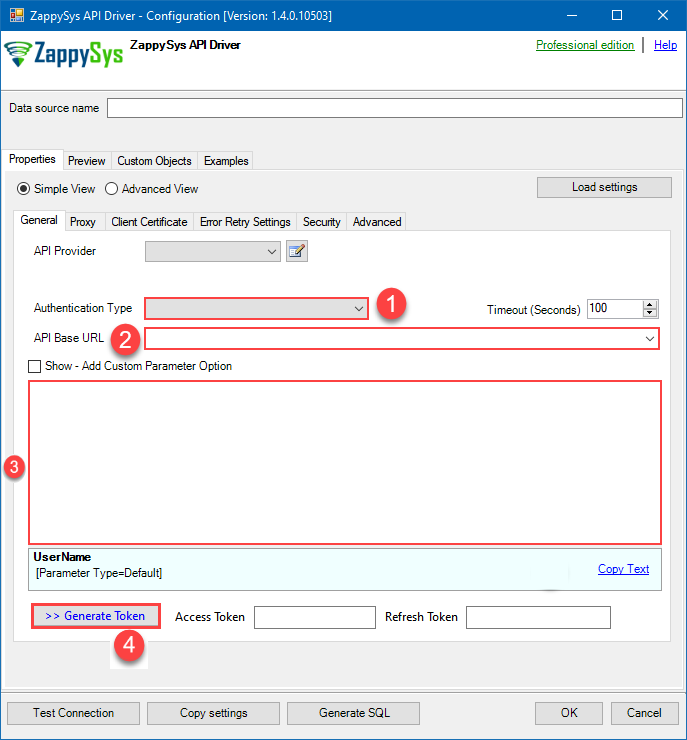
-
Once the data source connection has been configured, it's time to configure the SQL query. Select the Preview tab and then click Query Builder button to configure the SQL query:
 ZappySys API Driver - Amazon MWSAmazon MWS (Marketplace Web Service) Connector can be used to integrated web service API that helps Amazon sellers to programmatically exchange data on listings, orders, payments, reports, and more.AmazonmwsDSN
ZappySys API Driver - Amazon MWSAmazon MWS (Marketplace Web Service) Connector can be used to integrated web service API that helps Amazon sellers to programmatically exchange data on listings, orders, payments, reports, and more.AmazonmwsDSN
-
Start by selecting the Table or Endpoint you are interested in and then configure the parameters. This will generate a query that we will use in SSRS to retrieve data from Amazon MWS. Hit OK button to use this query in the next step.
SELECT * FROM Orders Some parameters configured in this window will be passed to the Amazon MWS API, e.g. filtering parameters. It means that filtering will be done on the server side (instead of the client side), enabling you to get only the meaningful data
Some parameters configured in this window will be passed to the Amazon MWS API, e.g. filtering parameters. It means that filtering will be done on the server side (instead of the client side), enabling you to get only the meaningful datamuch faster . -
Now hit Preview Data button to preview the data using the generated SQL query. If you are satisfied with the result, use this query in SSRS:
 ZappySys API Driver - Amazon MWSAmazon MWS (Marketplace Web Service) Connector can be used to integrated web service API that helps Amazon sellers to programmatically exchange data on listings, orders, payments, reports, and more.AmazonmwsDSN
ZappySys API Driver - Amazon MWSAmazon MWS (Marketplace Web Service) Connector can be used to integrated web service API that helps Amazon sellers to programmatically exchange data on listings, orders, payments, reports, and more.AmazonmwsDSNSELECT * FROM Orders You can also access data quickly from the tables dropdown by selecting <Select table>.A
You can also access data quickly from the tables dropdown by selecting <Select table>.AWHEREclause,LIMITkeyword will be performed on the client side, meaning that thewhole result set will be retrieved from the Amazon MWS API first, and only then the filtering will be applied to the data. If possible, it is recommended to use parameters in Query Builder to filter the data on the server side (in Amazon MWS servers). -
Click OK to finish creating the data source.
-
Most Important Step: Now, After creating or modifying a data source in ZappySys Data Gateway, make sure to click the SAVE button to preserve your changes.
Then, RESTART the Data Gateway service to ensure all changes are properly applied.Skipping either step may result in the new settings not taking effect.

Read data in SSRS from ZappySys Data Gateway
- Open Visual Studio and create a new SSRS project
-
Then add a new Shared Data Source (you can create a non-shared data source inside report too):
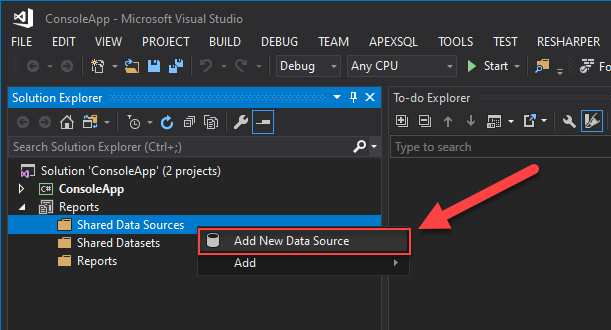
-
Continue with creating the Shared Data Source. Select Microsoft SQL Server as Type and hit Build button to proceed further:
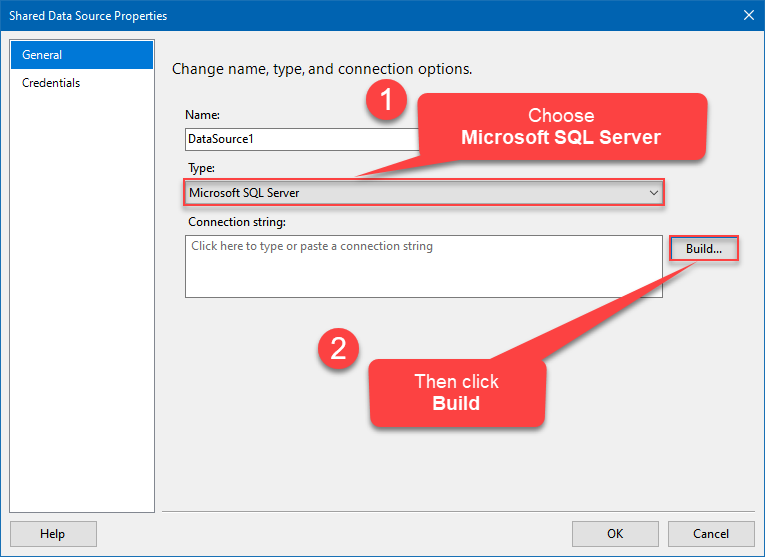
-
Once a window opens, configure it similarly. Configure "AmazonmwsDSN" as database name. Finally, hit Test Connection and OK:
AmazonmwsDSN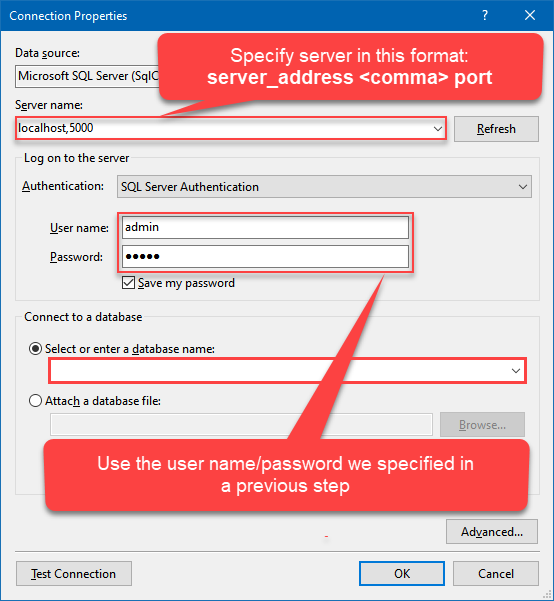
-
Another window opens, and it should look similarly to this one below which ends the creation of a Data Source:
DataSource=localhost,5000;Initial Catalog=AmazonmwsDSN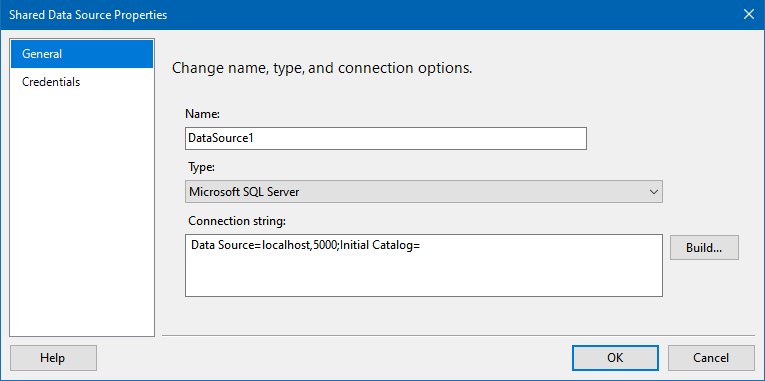
-
Now it's time to create a Dataset. If you don't have a report created, in one of the wizard's steps it will look like this:
SELECT * FROM Orders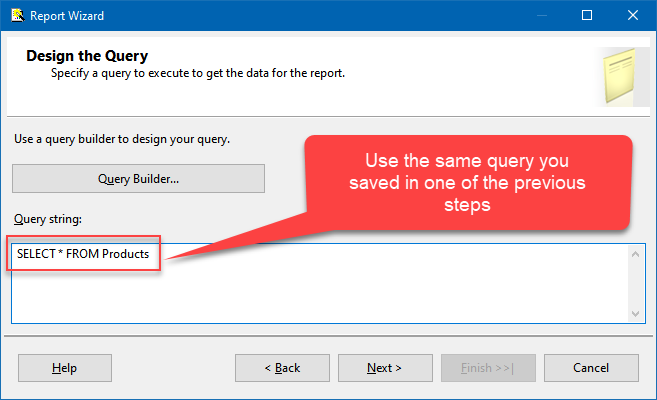
-
Finally, once you complete the report, similar results will show up:
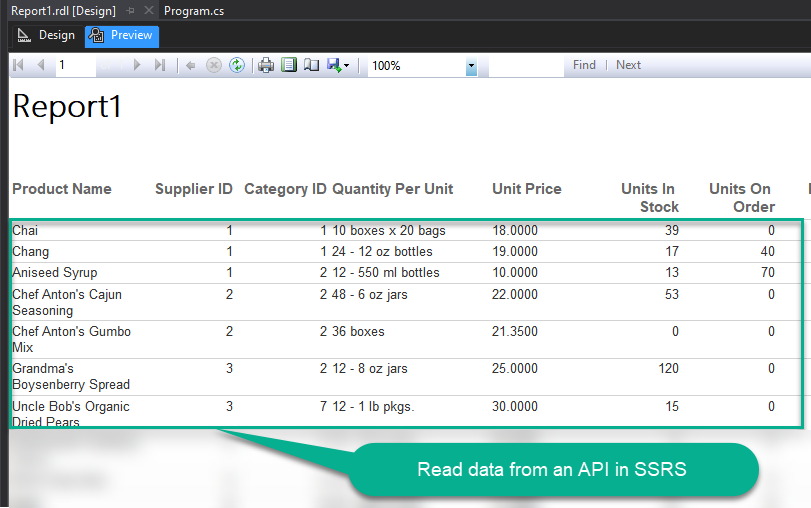
Passing Parameters to SSRS Report / Filter data
If you want to parameterize your report, then refer to this article
Actions supported by Amazon MWS Connector
Learn how to perform common Amazon MWS actions directly in SSRS with these how-to guides:
- Get CSV Report By ID - Cached Copy (Previously Generated)
- Get FlatFile Report (Live)
- Get Report Count
- Get Report List (Successful Only)
- Get Report Requests
- Get XML Report (Live)
- Get XML Report By ID - Cached Copy (Previously Generated)
- Orders: Get Single Order Information
- Orders: Read Order Items
- Orders: Read Orders
- Make Generic API Request
- Make Generic API Request (Bulk Write)
Conclusion
In this article we showed you how to connect to Amazon MWS in SSRS and integrate data without any coding, saving you time and effort.
We encourage you to download Amazon MWS Connector for SSRS and see how easy it is to use it for yourself or your team.
If you have any questions, feel free to contact ZappySys support team. You can also open a live chat immediately by clicking on the chat icon below.
Download Amazon MWS Connector for SSRS Documentation










































































